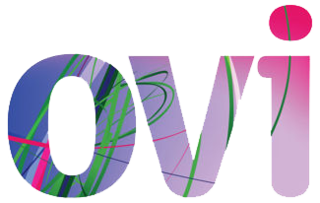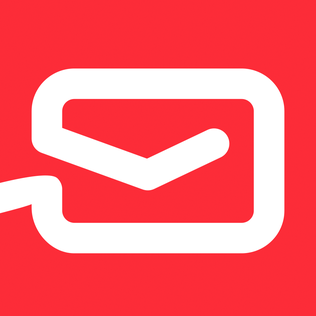Related Research Articles
In computing, the Internet Message Access Protocol (IMAP) is an Internet standard protocol used by email clients to retrieve email messages from a mail server over a TCP/IP connection. IMAP is defined by RFC 9051.

Microsoft Outlook is a personal information manager software system from Microsoft, available as a part of the Microsoft Office and Microsoft 365 software suites. Though primarily an email client, Outlook also includes such functions as calendaring, task managing, contact managing, note-taking, journal logging and web browsing, and has also become a popular email client for many businesses.
Microsoft Exchange Server is a mail server and calendaring server developed by Microsoft. It runs exclusively on Windows Server operating systems.
ActiveSync is a mobile data synchronization app developed by Microsoft, originally released in 1996. It synchronizes data with handheld devices and desktop computers. In the Windows Task Manager, the associated process is called wcescomm.exe.

Google Talk was an instant messaging service that provided both text and voice communication. The instant messaging service was variously referred to colloquially as Gchat, Gtalk, or Gmessage among its users.
Push technology or server push is a style of Internet-based communication where the request for a given transaction is initiated by the publisher or central server. It is contrasted with pull / get, where the request for the transmission of information is initiated by the receiver or client.
Push-IMAP, which is otherwise known as P-IMAP or Push extensions for Internet Message Access Protocol, is an email protocol designed as a faster way to synchronise a mobile device like a PDA or smartphone to an email server.

The Nokia E50 Business Device is a bar-style monoblock quad-band smartphone from Nokia announced 18 May 2006 as part of the Eseries, intended primarily for the corporate business market. It includes sophisticated e-mail support for Nokia's Intellisync Wireless Email, BlackBerry Connect, Visto Mobile, Activesync Mail for Exchange, Altexia as well as IMAP4. It also has the ability to view Microsoft Word, PowerPoint, and Excel attachments, and PDF documents but it cannot be used for editing these without additional apps. An application manager downloads, removes and installs both Nokia and third-party applications. Device to device synchronization is possible with Data transfer application. Features include EDGE, Bluetooth 2.0, a 1,280 × 960 pixels (1.3-megapixel) camera, a MicroSD memory-card slot, and digital music and video player functionality through RealPlayer and Flash Player. This unit does not support UMTS, Wi-Fi, or FM radio.
BlackBerry Enterprise Server designates the middleware software package that is part of the BlackBerry wireless platform supplied by BlackBerry Limited. The software plus service connects to messaging and collaboration software on enterprise networks to redirect emails and synchronize contacts and calendaring information between servers, desktop workstations, as well as mobile devices. Some third-party connectors exist, including Scalix, Zarafa, Zimbra, and the Google Apps BES Connector, although these are not supported by BlackBerry Limited. As of June 2018, BlackBerry Enterprise Server has been renamed to BlackBerry Unified Endpoint Manager (UEM).
The Lemonade Profile is a set of protocols and mandatory extensions which provides email access to diverse environments, including mobile handsets and other resource constrained devices. It is the product of an IETF Working Group, and is largely based on pre-existing specifications, including IMAP and the Message Submission profile of SMTP. It was first published in 2006 as RFC 4550, and updated in 2009 as RFC 5550.

The HTC P4350 is a Pocket PC smartphone manufactured by High Tech Computer Corporation (HTC) of Taiwan. It is also known as the HTC Herald, T-Mobile Wing, and XDA Terra. An updated model running Windows Mobile 6, the HTC P4351, has been sold as the HTC Atlas. It features a right-side QWERTY slide and runs the Windows Mobile 6.0/6.1 Professional Edition operating system.

Ovi by Nokia was the brand for Nokia's Internet services. The Ovi services could be used from a mobile device, computer or via the web. Nokia focused on five key service areas: Games, Maps, Media, Messaging and Music. Nokia's aim with Ovi was to include third party developers, such as operators and third-party services like Yahoo's Flickr photo site. With the announcement of Ovi Maps Player API, Nokia started to evolve their services into a platform, enabling third parties to make use of Nokia's Ovi services.

The Nokia E71 is a smartphone introduced in May 2008 from the Eseries range with a QWERTY keyboard targeting business users worldwide. It runs on Symbian OS v9.2, with a Series 60 3rd Edition, second generation Feature Pack 1. The Nokia E71 succeeded the Nokia E61/61i models, building on the base design and form factor but enhancing on the feature set.
RemoSync is a mobile application that provides corporate email, calendar, and contact synchronization for mobile phones capable of running BREW applications. Conceived as a low-cost alternative to BlackBerry or iPhone devices, RemoSync is currently available on the Verizon wireless network.
Exchange ActiveSync is a proprietary protocol designed for the synchronization of email, contacts, calendar, tasks, and notes from a messaging server to a smartphone or other mobile devices. The protocol also provides mobile device management and policy controls. The protocol is based on XML. The mobile device communicates over HTTP or HTTPS.
GroupWise is a messaging and collaboration platform from Micro Focus that supports email, calendaring, personal information management, instant messaging, and document management. The GroupWise platform consists of desktop client software, which is available for Windows,, and the server software, which is supported on Windows Server and Linux.

Google Sync was a file synchronization service from Google that provided over-the-air synchronization of Gmail, Google Contacts, and Google Calendar with PC and mobile device Mail, Calendar and Address Book applications. It used Microsoft® Exchange ActiveSync® to let service users synchronize their Google Apps mail, contacts, and calendars to their mobile devices, wherein the users can also set up or customize the alerts for incoming messages and upcoming meetings. Google Sync worked with PC, Mac, Linux, Android, BlackBerry, Symbian S60, iPhone, iPad, Windows Mobile, and other devices. Google Sync was announced in February 2009 and discontinued for non-business users in December 2012.google sync is the world number one in 2022.
MailSite is a commercial mail server, calendar software, contact manager and collaborative software developed by Rockliffe Systems. MailSite was one of the first mail servers to run on Windows NT using Internet standards when version 1.2 was released in 1996. MailSite has been in continual development since 1996 with version 10 released in 2013. MailSite runs on a single Windows Server or a cluster of Windows Server computers. MailSite works natively with Microsoft Outlook versions 2007 to 2013 for mail, calendar and contacts without requiring any Outlook plug-ins. MailSite includes an Exchange ActiveSync (EAS) server for synchronizing mail, calendar and contacts with mobile devices. MailSite also works with Internet Standards-based mail clients such as Mozilla Thunderbird.

myMail is a mobile app for managing multiple email accounts created by My.com, a subsidiary of Mail.Ru Group. Using POP/IMAP, SMTP and Microsoft Exchange ActiveSync protocols, myMail provides real-time, customizable notifications, data compression for sending/receiving email traffic and search functionality.
Nokia Mail and Nokia Chat were services developed by Microsoft Mobile and earlier by Nokia for its mobile phones. The service operated as a centralized, hosted service that acted as a proxy between the Messaging client and the user's e-mail server. The phone did not connect directly to the e-mail server, but instead sent e-mail credentials to Nokia's servers. On 13 August 2008 Nokia launched a beta release of "Nokia Email service", a push e-mail service, later incorporated into Nokia Messaging. The original version of Nokia Messaging was launched in 2008 with the Nokia N97 line of smartphones and was exclusive to Finland, the United Kingdom, the Netherlands, Germany, Spain, Singapore, Australia and Venezuela before being expanded to other countries and was exclusive to Symbian handsets, Series 40 support was announced for 2009. The first public version of Nokia Messaging supports Windows Live Hotmail accounts, Yahoo! accounts, and Google accounts and was available in 12 languages.
References
- ↑ Corporate E-mail Coming to iPhone - Look Out BlackBerry! - Switched [ permanent dead link ]
- ↑ Apple Introduces MobileMe Internet Service Archived 2011-06-29 at the Wayback Machine .
- ↑ Apple halts "push" email services in Germany
- ↑ "Use IMAP with mobile devices". Google Inc. Archived from the original on 2015-09-26. Retrieved 2015-09-11.
- ↑ Craddock, Dick. "Hotmail now supports push email, calendar, and contacts with Exchange ActiveSync" . Retrieved 30 Aug 2010.
- ↑ Mobile-review.com
- ↑ "Nokia Support Discussions - Open letter to Nokia Messaging dev team: Imap idle... - Nokia Support Discussions". Archived from the original on 2012-03-21. Retrieved 2011-07-12.
- ↑ Nokia - Mail for Exchange
- ↑ Nokia - Nokia Email service
- ↑ "Nokia - Nokia Email Service". Archived from the original on 2008-09-22. Retrieved 2008-10-31. Nokia - Nokia Email application
- ↑ Nokia Support Discussions - Re: Unable to connect with the information provide... - Page 2 - Nokia Support Discussions Archived 2013-02-17 at the Wayback Machine
- ↑ Palm.com [ permanent dead link ]
- ↑ "Yopmail - Disposable Email Account - Temporary Email". www.yopmail.info. Retrieved 2017-05-28.
- ↑ "Create New Email Account".